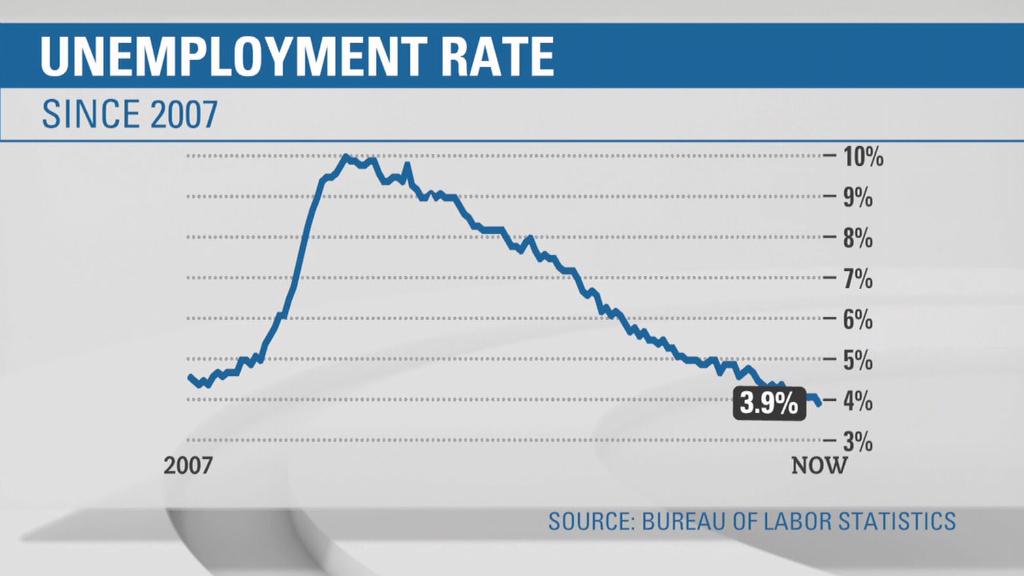
The job market hasn't been this good in a very long time.
The unemployment rate dropped below 4% in April for the first time since 2000. The Labor Department reported Friday that it fell to 3.9% — inching closer to territory not seen in half a century.
Employers added 164,000 jobs, slightly below what economists were expecting but better than a comparatively sluggish March. The economy has added jobs every month for seven and a half years, the longest streak on record.
"Getting down to 3.9 is quite a marker," said Robert Frick, chief economist with Navy Federal Credit Union.
The report indicates another month of solid job gains for an economy that has been expanding for almost nine years. Only the 1990s expansion was longer.
Business would be adding even more jobs if they could find the workers they want. There are more than 6 million unfilled job openings in the United States, near a record. The number of people quitting jobs is also historically high, as workers leave for better jobs.
The unemployment rate fell in April because the labor force shrank: 236,000 Americans who were either working or looking for work dropped out of the job market.
"We would have liked to see more people getting jobs rather than people leaving," said Satyam Panday, senior economist at S&P Global Ratings.
Frick believes unemployment will keep falling as businesses offer more attractive wages and benefits to entice Americans who have stopped looking for work.
"There's still hundreds of thousands of more people who will enter the workforce," he said. "I think we can get down to 3.5%."
Unemployment fell as low as 3.8% in April 2000, in the waning days of the technology boom. The last time it was lower than that was 1969.
Average hourly wages ticked up 4 cents in April. They grew 2.6% from a year earlier, slightly below economists' expectations.
Related: The US economy just hit a milestone
"Wages haven't been able to break out of the 2.5% to 2.8% range," Panday said.
But Panday expects wages to pick up as the labor market tightens further, putting pressure on businesses to pay more to keep their workers and entice new ones.
Americans need rising wages to help offset higher prices and drive consumer spending, the backbone of the economy.
Inflation is closing in on the Federal Reserve's 2% target, gasoline is heading toward $3 a gallon, and companies have been reporting cost pressures, which could force them to raise prices.
But it could force the Federal Reserve to raise interest rates more quickly than planned, a concern on Wall Street in recent months.
The report boosted the stock market: The Dow jumped almost 300 points. The yield on the 10-year US Treasury note, which has been climbing as expectations of further rate hikes increase, fell slightly to 2.92% after the jobs report came out.
Hiring gains in April were broad. Professional and business services added 54,000 jobs, health care added 24,000, and manufacturing posted an increase of 24,000 jobs.
Mining, a category that includes not just coal and metals but jobs in oil and gas fields, added 8,000 positions, partly because of a rise in oil prices. Employment in mining has risen by 86,000 since October 2016.
Counting Labor Department revisions for February and March, the economy has added an average of 208,000 jobs a month over the past three months.
"It's a robust pace given where we are in the cycle," Panday said.
President Trump celebrated the report. "3.9% Unemployment. 4% is Broken!" he said on Twitter.
The economy has added 2.7 million jobs during Trump's first 15 full months in the White House, extending labor market gains under the Obama administration. Employers added 3.1 million jobs during the last 15 months of President Barack Obama's tenure.
— CNNMoney's Chris Isidore contributed to this story.


